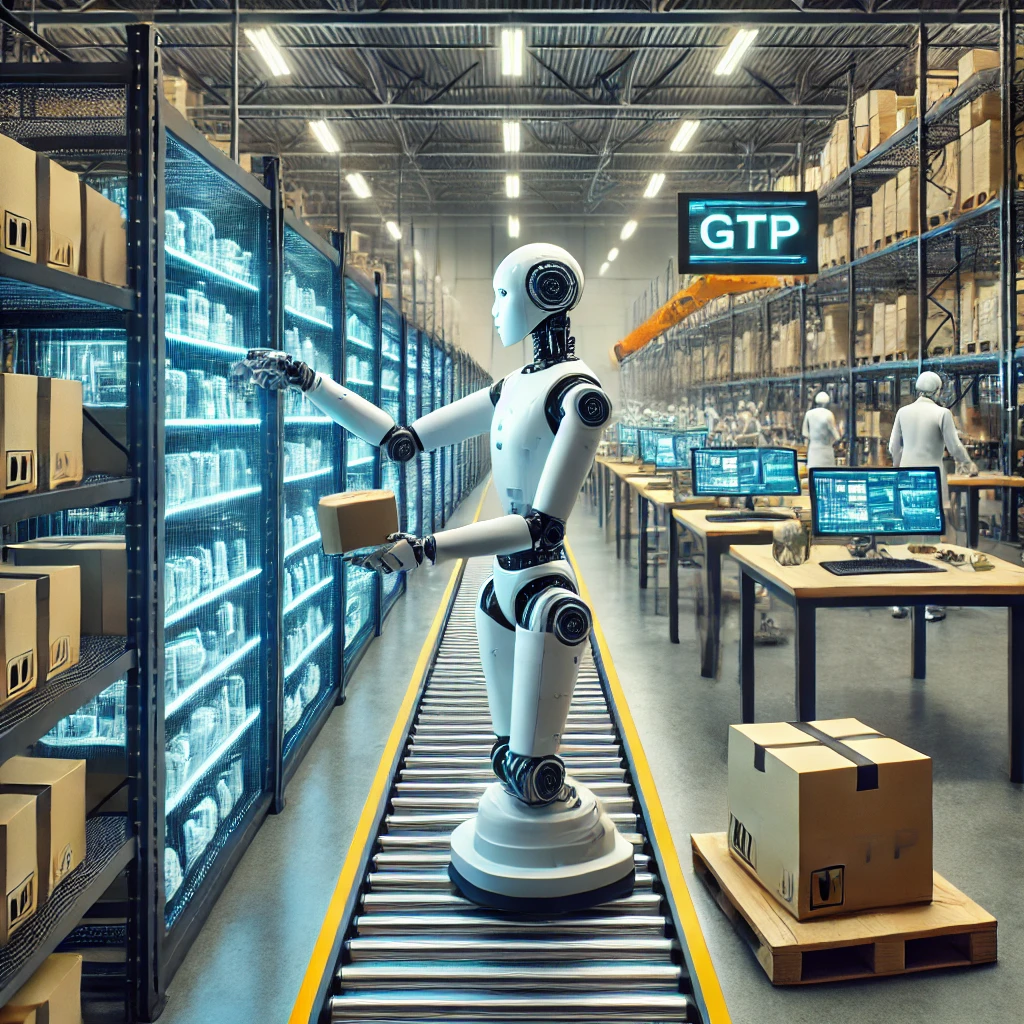Why Humanoid Robots Will Win Over Specialized Robots
/humanoid robot worker
This article draws inspiration from a thought-provoking podcast with Gavin Baker, a prominent expert on AI, semiconductors, and robotics. In the discussion, Baker explored the inevitability of humanoid robots playing a central role in the workplace—a concept gaining momentum across the robotics community as advances in AI and hardware accelerate.
Traditionally, robotics has been framed as a choice between specialization and generalization. In the context of warehouses, specialized robots, such as robotic arms for picking or automated systems for trailer unloading currently excel at narrowly defined tasks. However, this dynamic is shifting. As humanoid robots emerge, their ability to perform a wide variety of tasks "well enough" mirrors the evolution of general-purpose computers, which gradually replaced highly specialized computing devices. Though a humanoid robot might not outperform a specialized machine in a single area, its value lies in its versatility across multiple tasks.
This transition is being driven by the adaptability of humanoid robots. Powered by advanced AI and large language models (LLMs), these robots will be able to fluidly switch between tasks like picking, packing, and trailer loading—functions typically requiring multiple specialized machines. This flexibility aligns with the dynamic and ever-changing needs of modern warehouses, giving humanoid robots a strategic edge over specialized automation in environments that demand continuous adaptation.
Humanoids and The World Designed for Humans
The world is built for humans. From the layout of our warehouses to the design of factories and homes, everything is optimized for human bodies, movement, and interaction. Specialized robots, while highly efficient in their niche environments, require extensive adaptation either to the environment or to the robots themselves.
Warehouses are built around human movement—how we walk, reach, and interact with our environment. Humanoid robots, with their bipedal and dynamically stable design, can work seamlessly within these spaces. They can operate in tight areas, reach human-equivalent heights, and navigate stairs, ramps, and elevators just like people. This flexibility allows them to integrate into existing infrastructure with minimal adjustments, providing a level of adaptability that wheeled robots or fixed automation can't match.
Flexibility and Adaptability
Flexibility is the cornerstone of humanoid robots' dominance over specialized robots. Imagine a typical day in a modern warehouse: a humanoid robot could pick items for 10 hours at a goods-to-person station, pivot to unloading trailers for six hours, switch to loading trailers for a few more, and finish the day putting away inventory. Today, that same workload would require multiple human workers and multiple automation equipment.
Humanoid robots, powered by artificial intelligence (AI) and large language models (LLMs), will be able to handle the ever-changing workflows of modern industrial environments. As business processes evolve, humanoids can adapt—unlike specialized robots, which would require costly reprogramming or retrofitting. This adaptability, driven by AI and LLM integration, gives humanoids an edge in future-proofing your warehouse.
Scale Economies and the Cost of Generalization
One of the major reasons humanoid robots will win out is cost efficiency at scale. The robotics market is currently fragmented, with specialized robots developed by different companies for specific tasks. However, as humanoid robots scale up, their production costs will decrease. This creates a significant economic advantage for general-purpose humanoids versus maintaining fleets of task-specific robots.
A major challenge with niche robots is the complexity of making them work together seamlessly. Robots from different manufacturers often struggle with integration, and coordinating them can be difficult, especially as business processes change. Over time, each robot must be reprogrammed or retrofitted to adapt to new workflows, which limits flexibility. In contrast, humanoid robots, with AI-driven adaptability, could shift effortlessly between tasks and integrate with broader systems without extensive rework.
This problem of interoperability and integration is reminiscent of early computer systems. Eventually, general-purpose platforms like Microsoft Windows and macOS took over because they provided a unified experience that could be easily adapted to new tasks. Similarly, humanoid robots will simplify automation by reducing complexity and friction, making them more cost-effective than fleets of specialized robots that need constant maintenance and updates.
The Big Tech Advantage
Big tech companies like Tesla, Google, and Amazon are investing heavily in humanoid robots, and they have the resources to dominate this market. These companies have the necessary data, computing power, and AI capabilities to drive innovation in humanoid robotics, just as they did with AI itself. This gives them a significant edge over smaller, niche robot manufacturers, whose specialized robots will struggle to compete on cost and adaptability.
For instance, Amazon is trialing Digit, a humanoid robot developed by Agility Robotics, to assist with warehouse tasks like moving totes, with plans to eventually expand its role into more complex environments. Tesla’s Optimus is designed to automate labor in manufacturing, and could eventually be applied to logistics and other industries. Google, although quieter in the logistics space, is advancing robotics research with humanoid systems designed for broader human environments, which could easily adapt to warehouse settings.
The AI systems powering humanoid robots, particularly LLMs, allow them to not just perform tasks but also make decisions, process language, and learn on the go. This intelligence, combined with the significant resources and investments of big tech companies like Tesla, Google, and Amazon in humanoid robotics, positions these industry leaders to potentially dominate the supply of humanoid robots to the warehousing and logistics sectors.
The Future is Generalization
Specialized robots may continue to have their place in niche markets, but the future belongs to general-purpose machines that can handle a wide variety of tasks. Humanoid robots are positioned to meet this demand, offering greater flexibility, cost-efficiency, and ease of integration in a world designed for humans. The pattern is clear: specialization might rule initially, but over time, generalization wins. With LLMs and AI empowering these machines, humanoid robots are set to dominate the automation landscape.
Timeline for Humanoid Robot Integration
The reality of humanoid robots in warehouses is closer than we might think. We could see pilot programs for humanoid robots in warehouse environments within the next 5 years, and these pilots will refine how humanoids interact with dynamic workflows.
As for widespread deployment at scale, it’s likely that by the mid 2030s, large-scale use of humanoid robots in warehouses will be feasible. Advances in AI, LLMs, and manufacturing will allow humanoids to perform complex tasks, from picking and packing, cycle counting, putting away, and to loading and unloading trailers, all with the versatility of human workers but at scale.
Humanoid robot loading truck













